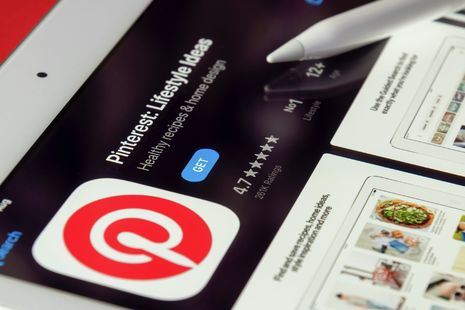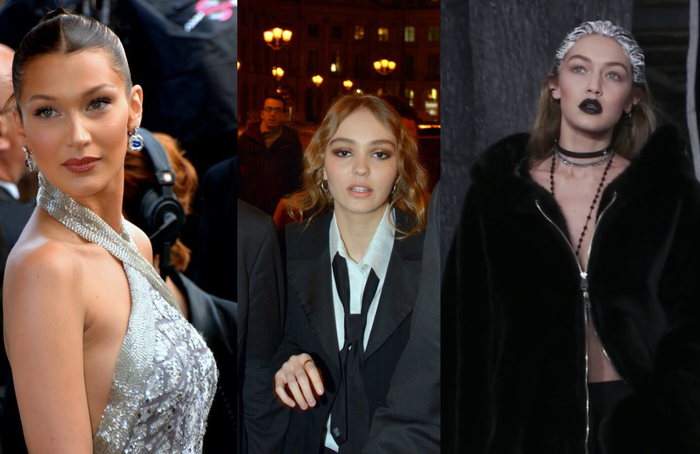Not (P)interested: The problem with the Pinterest echo chamber
Although not as focused on flaunting fame and followers as other social media sites, the homogenous wormhole of Pinterest poses its own obstacles to the innovation of genuine style

Pinterest might be the final form of social media left that’s not reliant on aggressive algorithmic promotions of celebrities. Behind Pinterest many can maintain full anonymity without any desire to expose themselves beyond the curation of the aesthetically pleasing. One may create a series of boards for every potential event in their life, or these boards may be simply maintained by pictures which spark joy (my namesake board, which is private, exists for my personal enjoyment only, and has over 600 pins) without the desire to ‘blow up’, get noticed, or even be engaged with. Few pins have comments, and whilst some boards and some people have a decent following on Pinterest due to their achievement of aesthetic continuity and accomplished cultivation, it remains for the most part a community of silent observation and appreciation. In this way, Pinterest is not dissimilar to a museum, albeit a museum without information cards.
“Pinterest is not dissimilar to a museum”
The fashion sectors of Pinterest have long been criticised for their lack of diversity, with the majority of the aesthetic relying on thin women or sculpted men to flaunt the trend of clothing to which one becomes a devotee. For those who may not fit those particular appearances, this creates a sense of envious reaching into the void. This is not the same envy as may be inspired by the likes of Instagram, which leans more into the realm of flaunting than Pinterest’s anonymous format allows, but the faceless beauty of the Pinterest fashion board instead invites the envy of all. Without a particular object onto which to pin their envy, the Pinterest boarder is instead forced to envy without discrimination, which may result in a deeper sense of inadequacy. After all, there is no circumstance by which one can excuse the clothing or beauty of the faceless ‘other’ of the Pinterest board, and so the fashionista must turn inwards.
Of course, endless scrolling through the aesthetic is not necessarily an avenue towards inadequacy. Many of us, I’m sure, are content to spend hours at a time peering at the masterpieces of a museum. Why should Pinterest, whose format provides a similar experience, be any different? What is clear, however, is that Pinterest creates a habitual desire to reach the epitome of one’s chosen aesthetic existence, a desire which is only exacerbated by the algorithm. Much like the occurrence noticed by many, that mentioning a product in the same room as your phone causes that product to appear in every advertisement you see for a week, a single pin of a frog will cause the Pinterest homepage to become inundated with amphibians. Theoretically, this is what the Pinterest boarder wants from their homepage – to be fed that which they feed themselves – but the problem with this algorithm is that it perpetuates homogeneity. It removes from the fashionista’s wheelhouse the chance to innovate, to include contrasting elements in a board, or to appreciate the artistic combinations of different styles. Once a dark academia girlie, always a dark academia girlie.
“The problem with this algorithm is that it perpetuates homogeneity”
The lack of a social aspect to Pinterest only furthers this echo chamber, as the echo chamber is devoid of alternative perspectives, styles, or suggestions beyond those which the algorithm has dictated to the Pinterest boarder. The possibilities for collaborative boards and messaging are available on the platform, but the structure of Pinterest doesn’t encourage these aspects as much as it does the endless scrolling of photos. Photos which, eventually, blend into one another. It is not uncommon to see a photo already pinned reappear thanks to the algorithm’s decision that this photo, posted by a different account, matches the board in question. This is understandable. But it’s also frustrating, and proves that Pinterest’s fashion boards are built on the reposting of the same photos, the same aesthetic, the same clothing and the same models again and again. It’s a space in which diversity cannot thrive because the algorithm won’t allow it to breach the over-saturated surface formed of repetition and homogeny.
And yet, as we scroll and pin and make these little boards unattached from the constant commentary facing us from other social media platforms, something of a comfort arises from the screen. Pinterest isn’t perfect by any means, but it does allow for the enjoyment of artistic curations without the constant notifications of external interest or numbers shoved in your face to dictate your popularity. It is one of the final forms of appreciation available which does not encourage the monetisation of your interests. Pinterest becomes the museum of the self, open for admiration at your leisure without fear of others’ judgement. For that, Pinterest becomes an invaluable resource to those whose board-building is solely an exercise in personal enjoyment, and one which remains a unique space in which the fashion fan can play.
 News / Cambridge students set up encampment calling for Israel divestment6 May 2024
News / Cambridge students set up encampment calling for Israel divestment6 May 2024 News / Cambridge postgrad re-elected as City councillor4 May 2024
News / Cambridge postgrad re-elected as City councillor4 May 2024 News / Proposed changes to Cambridge exam resits remain stricter than most7 May 2024
News / Proposed changes to Cambridge exam resits remain stricter than most7 May 2024 News / Some supervisors’ effective pay rate £3 below living wage, new report finds5 May 2024
News / Some supervisors’ effective pay rate £3 below living wage, new report finds5 May 2024 Fashion / Class and closeted identities: how do fits fit into our cultures?6 May 2024
Fashion / Class and closeted identities: how do fits fit into our cultures?6 May 2024






